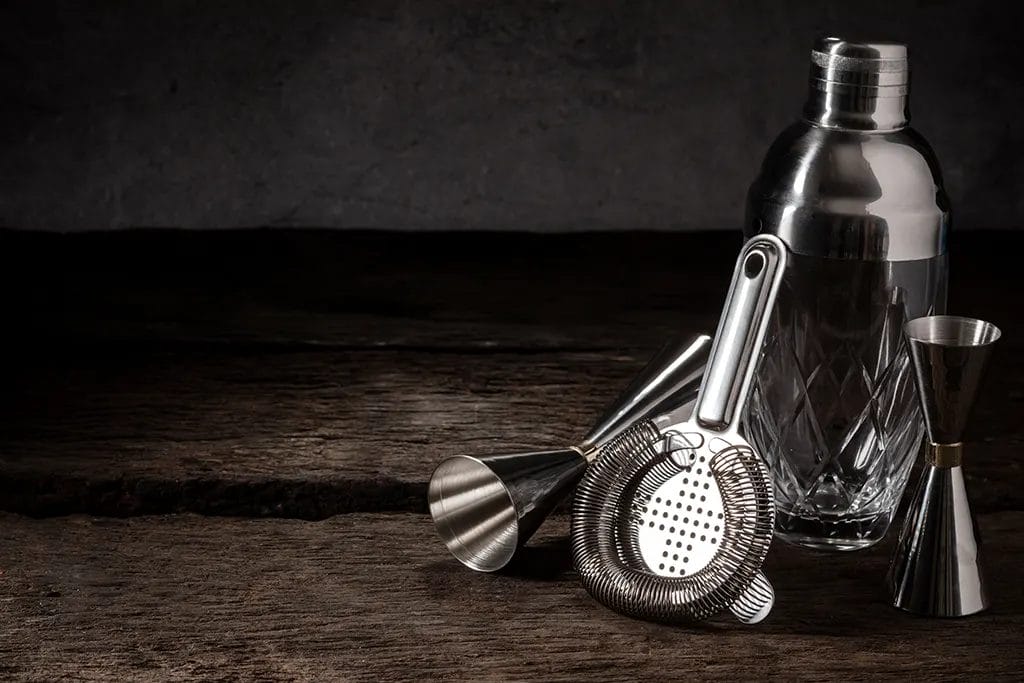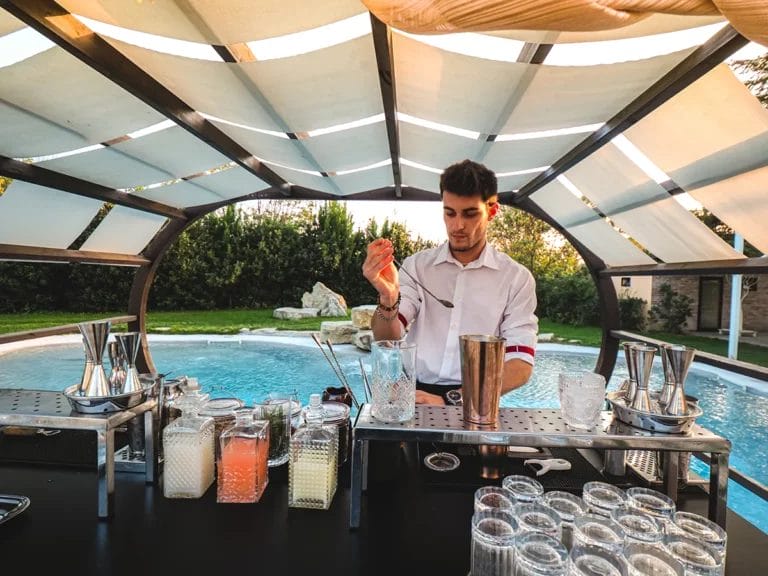Did you know that 20% of small businesses fail the first year, with that number increasing to 50% by their fifth year?
If you’re thinking of starting your own bartending business, those numbers can keep you up at night. While there are many reasons a business could fail within the first few years, one of the biggest causes is simply a lack of planning.
While some factors may be out of your control, planning is not one of them. Having a strong business plan not only provides you with a roadmap for how to run and grow your business but can also help you secure funding from investors.
To help you succeed, we’ve broken down a bartending business plan into just six steps that will help you outline the goals and vision you have for your business.
As you learn how to craft your business plan, make sure to download our free printable template so you can follow along. This will help you build a strong foundation for your bartending business!
How to Make a Bartending Business Plan
1. Executive Summary
While the exact structure of business plans can vary, having an executive summary at the beginning is a good idea if you hope to secure investor funding one day. The purpose of this section is to grab the reader’s attention and give an exciting overview of your business and why you think it will succeed.
Be sure to include the following details:
- The service(s) you’re providing
- Your mission statement
- Basic information about your employees
- Where you plan to operate your business
- What types of events you plan on booking (weddings, corporate parties, festivals, etc.)

2. Company Description
Branding
This is an opportunity for you to lay out everything from your business’ name to the logo, color scheme, and brand voice for yourself and any other stakeholders who might view your plan. If you haven’t already, make sure you’ve come up with the perfect name for your bartending business before deciding on the rest of your branding!
Having these details figured out before starting your business makes it easier to stay consistent and true to your brand identity as your business grows.
Sample Bar Packages and Services
Outlining what you want your services and menu to look like is a crucial step in creating your business plan. This will allow both you and any potential investors to clearly see what it is you plan to offer, and it will help you later on when you’re calculating your total operating expenses and determining how much income you need each month to break even.
Team and Management
Explain what your team looks like or what you want it to look like. Use this section to answer questions like:
- How many employees do you have/plan to have?
- Do you have any experts on your team that set your business apart from the rest?
- What requirements will your employees have to meet in order to get the job?
- What benefits do you offer/plan to offer your employees?
- Will your staff be full-time, part-time, or a mixture of both?
You should also include the legal structure of your business in this section (e.g., sole proprietor, LLC, Corporation, etc.) Give yourself and your investors a thorough understanding of what you want your team and management structure to look like, including what the responsibilities are for each role in your company.

3. Market Analysis
Market analysis is all about identifying your target market and the competitive landscape your mobile bartending business will operate within. There are three main points you’ll want to cover in this section:
- Target market: What kind of customer are you trying to reach? Who will your business appeal to? Include details about demographics, behaviors, and other characteristics of your target market here.
- Location analysis: Even though your bartending business isn’t restricted to one physical location, it’s still important to think about the general area you want to do business in (city, county, and/or state). Why are you choosing to run your business in one area versus another?
- Competitive analysis: Since your business will be competing against others in the same area, it’s important to identify who your competitors are and what advantages you have against them. What will you offer that your competitors don’t?
4. Marketing Strategy
Marketing is an essential part of your business’ success. Your marketing strategy should be designed to attract and retain your target customers.
Your approach to marketing your bartending business may change over time, but you should consider the following when making your first plan:
- Bartending business website: Having a website makes it more likely for people to find you when searching for a bartending business in your area and makes your services look more legit. Customers can reach out to you via webforms, view your menu, and view photos and videos showcasing your services, enabling them to imagine having your services at their weddings. The Wix website builder is a great platform for quickly building a website using artificial intelligence (AI) that has web forms and menus and even allows for taking deposits and processing payments.
- Google business page: If you want to be discovered in Google local searches, having a Google Business Profile is essential. These profiles are often shown alongside organic search results, giving people another way to discover your business.
- Social media marketing: Having a social media presence is critical, but think carefully about which platforms are best to reach your target market. For example, Instagram users tend to be Gen Z and Millennials. So if those are your target age demographics then Instagram should be the main focus of your marketing efforts. If you plan on bartending weddings, Pinterest is a good option because many people use this platform to plan their weddings.
- Word-of-mouth referrals: Most people trust their friends’ and loved ones’ recommendations, so word-of-mouth marketing is extremely powerful. What kinds of referral rewards or incentives can you offer customers to get them to spread the word about your business?
- Reviews: Reviews act as word-of-mouth endorsements of your business. Your Google Business Profile is the best place to get reviews as these are displayed when your profile is shown in online searches. As with word of mouth, think of ways you can encourage your customers to leave reviews for your mobile bartending services after every event.
- Paid advertising: While you can garner interest in your business on social media without paying for ads, they’re always an option to help you attract new customers. Facebook, Instagram, and Pinterest will all allow you to promote any post and turn it into an ad.

5. Loans and Financing
Whether or not you’ve already secured funding for your business, it’s important to include this section in your business plan so you know exactly how you’re going to pay to bring your bartending business to life.
If you haven’t gotten funding yet, use this space to write your investor pitch and describe how much money you’ll need and how you plan to use it. There are many ways to go about financing your business, including:
- SBA (Small Business Association) loans
- Microloans
- Business lines of credit
- Your personal savings
- Finding business partners willing to invest
If you’ve already secured funding, include information about the investments you’ve secured so that anyone reading your business plan is aware of how much you’ve received and how it’s being put to use.
6. Operation Costs and Financial Projections
Your operating expenses include the amount you pay for your equipment, inventory, labor, bartending insurance, permits and licenses that allow you to legally sell and service alcohol, and everything else you need to start a bartending business.
Follow this formula to figure out your total operating costs:
Costs of goods sold + Operating expenses = Total operating costs
Once you have this number, include a break-even analysis in this section to show how much you need to make in sales each month to break even with your total operating costs.
You should also include a cash flow analysis that breaks down your spending on supplies, labor, and other operational costs. This is necessary to show that you won’t need any extra money coming in other than what you may have requested in the previous section of your plan.
Download Your Free Bartending Business Plan PDF
While there will always be risks associated with starting a business, knowing how to put together a business plan is a great way to make sure you’re checking all the boxes before diving headfirst into this new venture.
Before you go, be sure to download your free bartending business plan template! We’ve included each of the sections above in the template so all you need to do is fill in the blanks.





